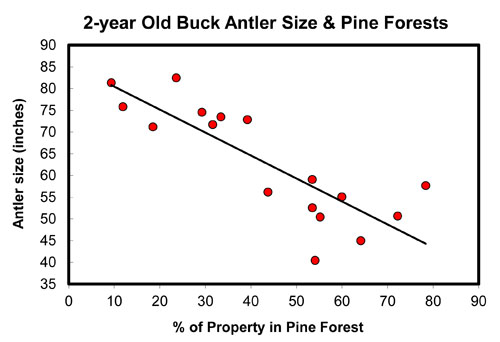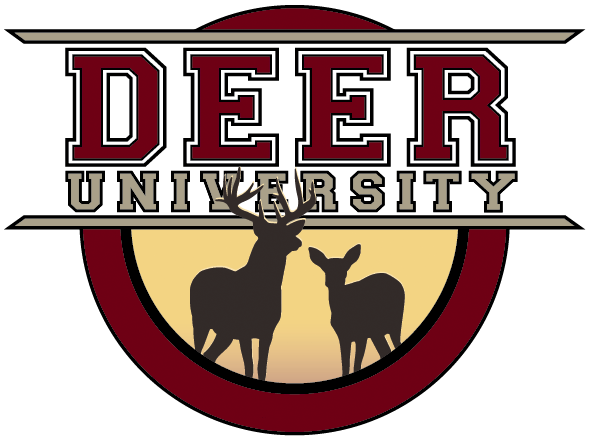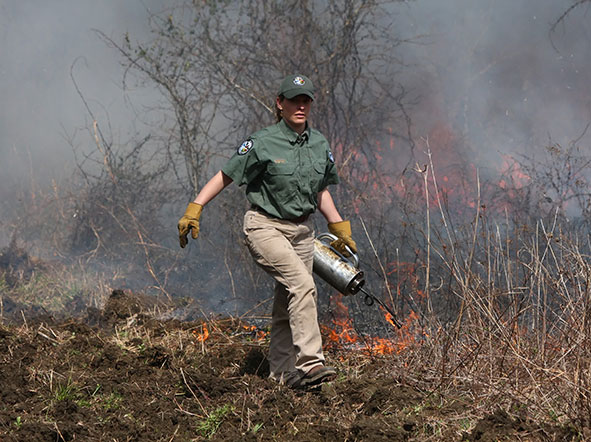The Deer Habitat Landscape
Body and antler sizes of deer populations can vary significantly from location to location, and this is in part due to variations in habitat structure and composition. The diversity among forestlands within the southeastern region allows for an array of potential types, compositions, and arrangements of vegetation, which lead to significant differences in the abundance and quality of deer forages. In addition, land-use decisions such as the presence of agriculture or timber or the use of thinning, herbicides, or prescribed burning can shape which species of vegetation are present and to what degree. These factors all create variations in the amount and quality of deer forages between even the closest of locations, which can in turn account for physical differences in body and antler characteristics between deer populations. In a recent study by the MSU Deer Lab, we determined the relative influence of different vegetation types and configurations on white-tailed deer antler size. We related antler size to the percentage of the landscape in various vegetation classes to identify which variables were most influential and best described the relationships between deer populations and their habitats.
The study used harvest data from hunting clubs participating in the Mississippi Department of Wildlife, Fisheries, and Parks' Deer Management Assistance Program. We calculated average antler size for 2.5-year old bucks harvested from 1991 to 1994 to coincide with satellite imagery from that time period, yielding 203 populations for analysis. We compared average antler size from each population's location to the vegetation composition of that location. Our results demonstrated that in landscapes that are dominated by dense forests, land-use types that promote the growth of ground-cover plant communities should positively influence deer habitat quality and antler size (and likely body size and reproduction as well). Within general regions with similar soil nutrient quality, variation in antler size was explained by the composition of land-use types that either promote (e.g., agriculture and pasture) or suppress (e.g., pine forest) the growth of quality deer forages. Landscapes that are dominated by pine forests simply do not provide enough quality foraging vegetation for white-tailed deer, unless they are managed for deer food production.
We also found that human influence can play a major role in the regional variation among deer population physical characteristics. Managers of deer populations that are associated with high-density pine forests should increase the production of annual and perennial forbs by thinning and prescribed burning. The use of selective herbicides to remove midstory hardwoods in combination with prescribed burning can also increase the production of high-quality deer forages and improve the habitat's carrying capacity for deer. Furthermore, supplemental food plantings are an option for hunting clubs that lease property and do not have the ability to manage the forests they hunt. Please remember that our results do not condemn pine forests, as these forests serve as a valuable source of income to landowners. Instead, our results emphasize the importance of thinning, burning, and other silvicultural practices that open forest canopies and stimulate the production of deer forages, ( as seen in the Forest Management Section ), if improving deer quality is an objective of the landowner. Keep in mind that managing a property for timber production and wildlife are certainly compatible, but there are financial tradeoffs. If the landowner wants to maximize timber production (and monetary value of the forest), production of quality deer forages will be minimal; however, these forests can be managed to produce more deer food, but this usually entails a reduction in timber basal area and the costs of prescribed burning an possibly herbicide treatments.




